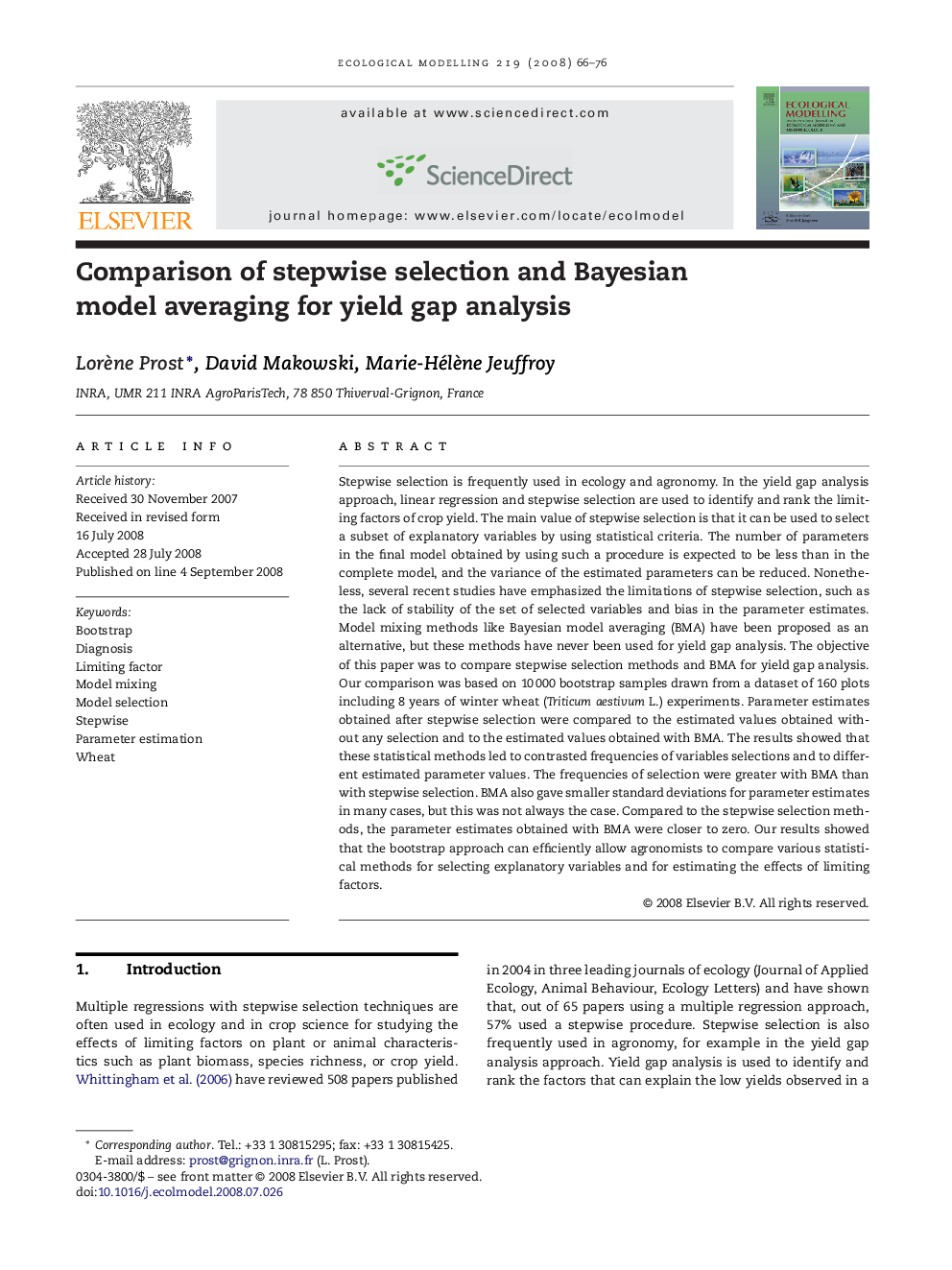| Article ID | Journal | Published Year | Pages | File Type |
|---|---|---|---|---|
| 4377803 | Ecological Modelling | 2008 | 11 Pages |
Abstract
Stepwise selection is frequently used in ecology and agronomy. In the yield gap analysis approach, linear regression and stepwise selection are used to identify and rank the limiting factors of crop yield. The main value of stepwise selection is that it can be used to select a subset of explanatory variables by using statistical criteria. The number of parameters in the final model obtained by using such a procedure is expected to be less than in the complete model, and the variance of the estimated parameters can be reduced. Nonetheless, several recent studies have emphasized the limitations of stepwise selection, such as the lack of stability of the set of selected variables and bias in the parameter estimates. Model mixing methods like Bayesian model averaging (BMA) have been proposed as an alternative, but these methods have never been used for yield gap analysis. The objective of this paper was to compare stepwise selection methods and BMA for yield gap analysis. Our comparison was based on 10Â 000 bootstrap samples drawn from a dataset of 160 plots including 8 years of winter wheat (Triticum aestivum L.) experiments. Parameter estimates obtained after stepwise selection were compared to the estimated values obtained without any selection and to the estimated values obtained with BMA. The results showed that these statistical methods led to contrasted frequencies of variables selections and to different estimated parameter values. The frequencies of selection were greater with BMA than with stepwise selection. BMA also gave smaller standard deviations for parameter estimates in many cases, but this was not always the case. Compared to the stepwise selection methods, the parameter estimates obtained with BMA were closer to zero. Our results showed that the bootstrap approach can efficiently allow agronomists to compare various statistical methods for selecting explanatory variables and for estimating the effects of limiting factors.
Related Topics
Life Sciences
Agricultural and Biological Sciences
Ecology, Evolution, Behavior and Systematics
Authors
Lorène Prost, David Makowski, Marie-Hélène Jeuffroy,
